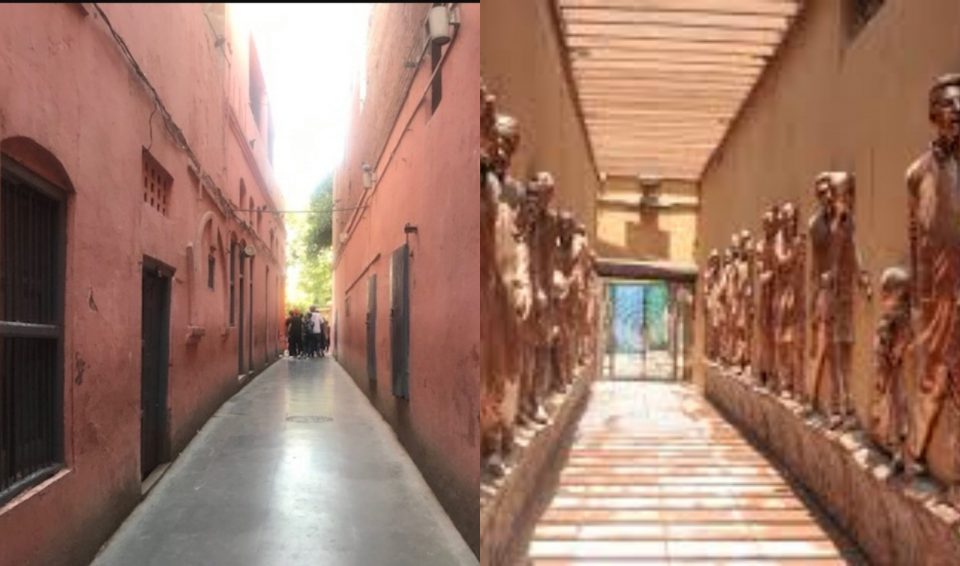
Why a revamped Jallianwala Bagh is riling up historians?

The revamping of Amritsar’s Jallianwala Bagh with a light and sound show and touristy frills – recently inaugurated by Prime Minister Narendra Modi – has drawn sharp criticism from historians, politicians and the Sikh community who have called it an insult to the martyrs who laid down their lives for the country.
Around two centuries ago – on April 13, 1919 – on Baisakhi Day, British Brigadier-General REH Dyer and his men surrounded the garden, enclosed from all sides with lofty walls barring the entrance, and fired indiscriminately at the peaceful crowd gathered there to protest the arrest of freedom fighters Dr. Saifuddin Kitchlu and Dr. Satya Pal. Around a 1,000 people were killed in the incident including many who jumped into the well in the bagh to escape the bullets, but only to drown.
Since that day the memorial stands testimony to a gory chapter of British rule in India. For a visitor, the narrow entrance, high walls and the well of Jallianwala Bagh have been stark reminders of the dread the protesters went through while trying to escape Dyer and his men.
However, the narrow entrance has now been remodelled, its top partially covered and its walls adorned with sculptures of martyrs, symbolising the common men who died on the fateful day. A 28-minute free-of-cost sound and light show, enacting events of the Jallianwala Massacre is also available for visitors. The Martyrs Well or ‘Shahidi Khu’ is now covered with a transparent shield.
The refurbished memorial was virtually inaugurated by Prime Minister Narendra Modi on Saturday, but much to the chagrin of historians who have criticised the government of stripping the martyrs’ memorial of its pathos through touristy embellishments which are rather celebratory in nature.
“People visiting Jallianwala Bagh should go with a sense of pain and anguish. They have now tried to make it a space for enjoying, with a beautiful garden. It was not a beautiful garden,” historian and former JNU professor Chaman Lal told The Hindu adding that the government has resorted to “distorting history.”
Historian Kim A Wagner, author of Jallianwala Bagh: An Empire of Fear and the Making of Amritsar Massacre called the changes a part of the “Disneyfication of the old city of Amritsar.”
“Devastated to hear that Jallianwala Bagh, site of the Amritsar Massacre of 1919, has been revamped – which means that the last traces of the event have effectively been erased. This is what I wrote of the memorial in my book, describing a space that has now itself become history,” he tweeted sharing excerpts from his book.
Devastated to hear that Jallianwala Bagh, site of the Amritsar Massacre of 1919, has been revamped – which means that the last traces of the event have effectively been erased. This is what I wrote of the memorial in my book, describing a space that has now itself become history. pic.twitter.com/GypQfrOulq
— Kim A. Wagner (@KimAtiWagner) August 28, 2021
“This corporation of monuments, where they end up as modern structures, losing the heritage value. Look after them without meddling with the flavours of the period these memorials represent,” historian Irfan Habib tweeted.
CPI(M) leader Sitaram Yechury called the refurbished memorial an “insult to martyrs” while adding a tart swipe that it has been done by those “who stayed away from the epic freedom struggle”.
Of all the renovations, the light and sound show has riled up many who have questioned the celebratory nature of the event, asking the government on whose side it is on.
“What the hell is wrong with this man? What is so celebratory about the Jallianwala Bagh massacre that you need a light and sound show there for heavens sake? But I mean how can we expect those colluding with the British to understand the horrors of this day,” tweeted Congress’ national convenor Hasiba reacting to a tweet by Modi announcing the inauguration of the revamped memorial.
With the Centre having allocated ₹20 crore for the renovation of the memorial in 2019, several other changes have been made in the campus by the Ministry of Culture. This includes building of ticket counters, toilets and drinking water kiosks. A lotus pond has been built around the main memorial and a Salvation Ground has been constructed where tourists can sit in silence to pay tribute to the martyrs. Underutilised buildings on the campus have also reportedly been remodelled into four new galleries where the history of Punjab during the period is exhibited.

